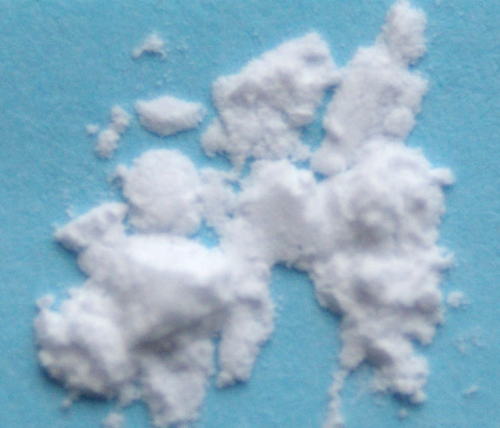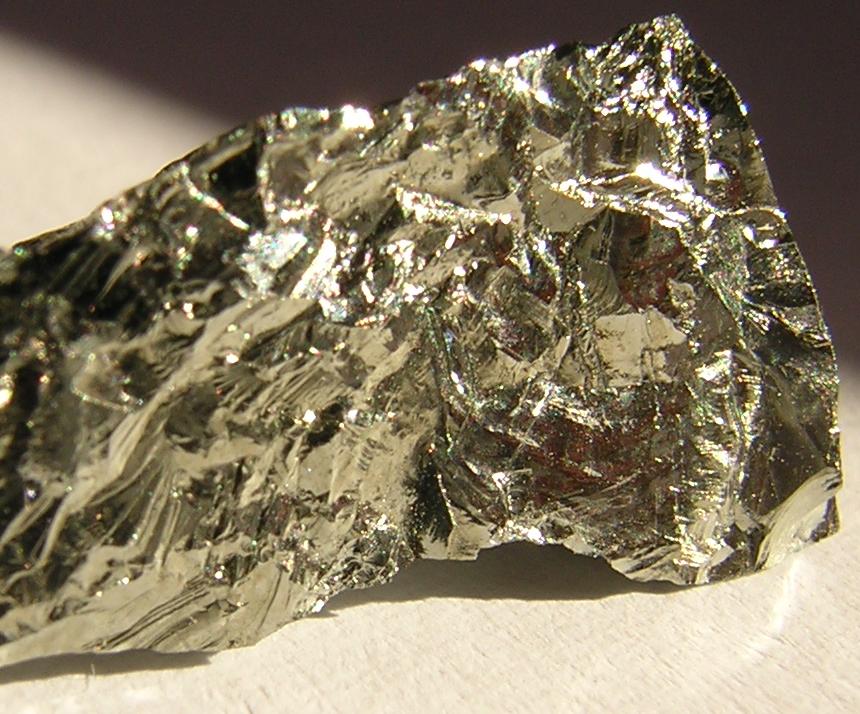Germanium powder 99,999%

Germanium powder
Germanium powder 99,999%
When Mendeleev 1869 published his first periodic table of elements, it contained several elements that were still undiscovered. He gave everyone a temporary name and predicted his qualities based on the surrounding elements. One of them was called ekasilicon, and Mendeleev almost perfectly predicted the properties of the actual element that 1886 discovered by Clemens Winkler and named after his native Germany: germanium.
Germanium is a semiconducting metalloid with silicon-like properties, and its use in electronic devices predated the use of the more familiar element. The first transistors were made 1947 in Bell Labs from germanium. Finally, the available technologies for use with silicon and the abundance of silicon have led to many other silicon semiconductor applications, including standard computer chips, and germanium has played a limited role in semiconductor devices for many years. Today, however, new technologies make Germanium a key material for electronic applications. Germanium is preferable to silicon in some types of photovoltaic cells used to generate solar energy and is used as an important substrate in the manufacture of high brightness LEDs for flashlights, taillights, cameras, traffic signals, and displays. Germanium, as an LED component, is sometimes preferable to the alternative gallium arsenide because it breaks less frequently and poses fewer disposal problems. In addition, microchip designs with germanium-on-insulator or silicon-germanium technology are increasingly being used.
Another important use of germanium is the favorable optical properties of germanium and some of its compounds. Germanium oxide has a high refractive index and low optical scattering, making it suitable for use in wide-angle lenses and some microscopes. Germanium oxide also confers some of these properties when used as a dopant in fused silica, and is used as such in the core of optical fibers. An additional useful optical property is that germanium glass is transparent to infrared radiation. It is therefore used in thermal imaging cameras, night vision systems and sensitive infrared detectors. Another use of germanium in optical systems is the material germanium antimony tellurium or GeSbTe, a phase change material used in rewritable optical discs (CD-RW, DVD-RW) and other phase change storage devices.
In addition to its electronic and optical applications, germanium is also used in several other key areas. Germanium oxide is used as a catalyst in the production of many plastics. Adding germanium in small quantities to sterling silver reduces fire and tarnishing and makes the final metal harder. In contrast to earlier ideas, germanium has been shown to have no medical function and is considered potentially dangerous when consumed. Nevertheless, some dietary supplements contain the element.

Germanium metal
Although germanium is not particularly rare, it is not contained in any mineral in a percentage sufficient to specifically degrade germanium. Instead, germanium is derived from concentrates obtained as by-products from the extraction of other metals, particularly zinc, and additionally from the fly ash of some coal-fired power plants.
Highly pure germanium powder is produced in the smallest possible average grain sizes for the production of pressed and bonded sputtering targets as well as for chemical deposition processes (CVD) and physical deposition processes (PVD), including thermal and electron beam evaporation (e-beam), low temperature organic evaporation, atomic layer deposition (ALD), organometallic and chemical vapor deposition (MOCVD). Powders are also suitable for all applications where large surface areas are desired, e.g. B. for water treatment as well as for fuel cell and solar applications. Nanoparticles also produce very high surface areas. Standard powder particle sizes average in the range of -325 mesh, -100 mesh, 10-50 microns, and submicrons (<1 micron). Germanium is also produced in rods, ingots, pieces, pellets, discs, granules, wire and in composite forms such as oxide.
Germanium Powder 99,999% price
- Prices for germanium powder 99,999% -> prices for high-purity metals
- Prices for rare earths
- Prices for strategic metals
- Prices for base metals
- Prices for high-purity metals
